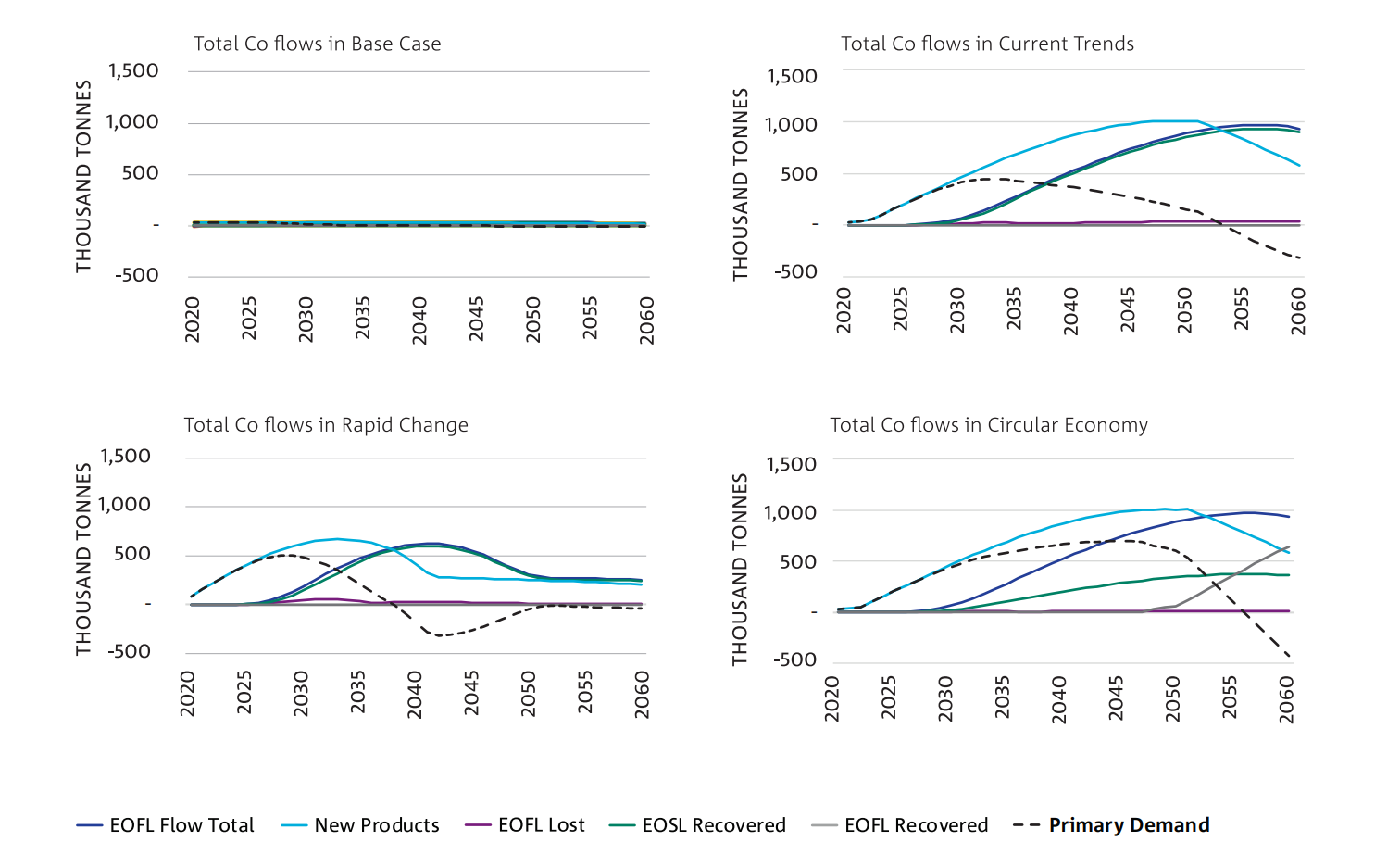CSIRO report uses market analysis tool to shed light on future of critical metals
November 9, 2021
Selected stocks and flows for Co associated with car production and subsequent scrappage under four different scenarios from ‘Know Unknowns: the devil in the details of energy metal demand’ (Courtesy CSIRO)
A new report by CSIRO, Australia’s national science agency, has uncovered powerful and counter-intuitive insights into the future supply and demand of critical metals needed to support the transition to a low emissions future.
The report ‘Known Unknowns: the devil in the details of energy metal demand’ uses a Physical Stocks and Flows Framework (PSFF) tool to look at three electric vehicle (EV) battery metals (cobalt, lithium and nickel) under three different EV uptake scenarios. The report also looks at the potential for retiring EV batteries to meet the electricity storage requirements of a renewables-based electricity grid.
CSIRO’s Critical Energy Metals Mission-in-development lead, Dr Jerad Ford, said the PSFF tool uses factors not currently accounted for in traditional forecasts to test demand & supply assumptions, although it is not intended to be used as a prediction tool.
“We know that demand for many metals will increase substantially as the world transitions to a low carbon economy,” stated Dr Ford. “But unsophisticated models based on current supply levels and basic recycling rates lead to many mischaracterisations of the real opportunities in both metal mining and recycling. They ignore the dynamics of materials flows on a global scale and the expected changes in underlying technologies.”
However, Dr Ford added, “Even a fully comprehensive PSFF cannot provide completely ‘accurate’ forecasts because there are so many unknowns, interactions, and complexities around the future demand for metals, like the prices of metals and substitution effects. A PSFF does, however, enable the development of internally consistent scenarios to explore how ‘views’ on major components of the energy transition will play out and interact with each other.”
For instance, it is sometimes assumed that demand for newly mined metals like cobalt and nickel will continue to increase for the foreseeable future, as they are essential for high performance lithium-ion batteries used in EVs. By accounting for additional factors such as changes in battery chemistry, quicker EV uptake, and higher levels of recycling, however, the PSFF tool suggests that, even within the same scenario, new cobalt demand may have an extremely short demand window before an extended glut, while nickel peaks early then falls back sharply, and lithium remains stronger for longer before also trailing off in the out years.
The PSFF tool isn’t limited to battery metals; it could be used by businesses wherever major new technologies require new mixes of metals to input market assumptions to understand the implication for their business. The tool can test what supply and demand may look like for metals under the assumed conditions, which is expected to allow businesses to manage risk and stay abreast of trends.
“We are currently in the early stages of engaging with external partners, and ready to partner with industry and government to develop bespoke scenarios that reflect partners’ key interests,” stated Dr Jim West, the CSIRO senior experimental scientist who built the PSFF model and co-authored the report. “Our overarching aim is to better develop and share our capability, to help Australian industry make the smartest investments in the lead-up to a low carbon future.”
The full report is available via the CSIRO website.
















